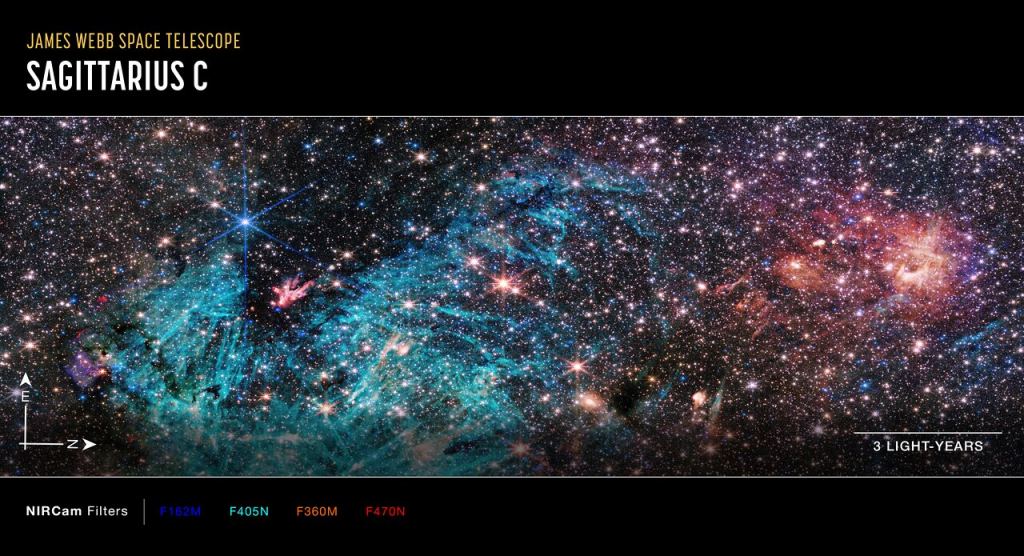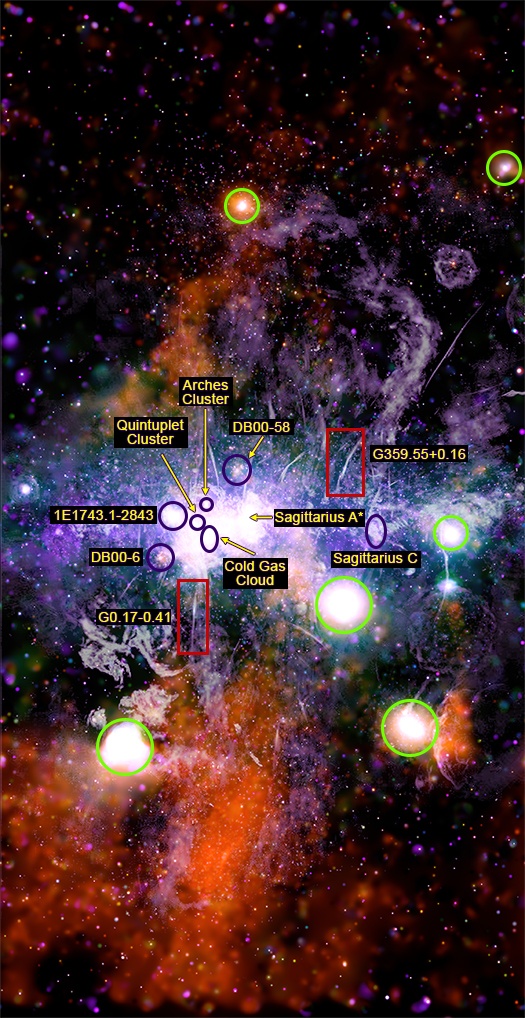The JWST is taking a break from studying the distant Universe and has trained its infrared eye on the heart of the Milky Way. The world’s most powerful space telescope has uncovered some surprises and generated some stunning images of the Milky Way’s galactic center (GC.) It’s focused on an enormous star-forming region called Sagittarius C (Sgr C).
Sgr C is about 25,000 light-years from Earth and 300 light-years away from our galaxy’s supermassive black hole, Sagittarius A* (Sgr A*.) This image contains about 500,000 stars.
The cyan area is a massive region of ionized hydrogen, but its size is a bit of a surprise. Typically, hot young stars ionize the hydrogen gas in a situation like this, but this region is so large that young stars can’t really account for it.
The deep black region directly above the ionized hydrogen is an infrared-dark cloud (IDC). It’s a part of the molecular cloud that’s extremely dense and cold. Even though the JWST is extremely powerful and has the capacity to discern faint infrared sources, it can’t see what’s not there. Light from the stars beyond the IDC isn’t reaching the Webb. So even though it appears less densely populated than other parts of the image, the opposite is true. The Webb is mostly seeing stars in the foreground.

IDCs were only discovered about 30 years ago, and their nature is still kind of mysterious. They may be where extremely massive stars are born. Only more research can confirm that.
A cluster of young protostars is emerging from the cloud. They appear as a red clump near the bottom of the IDC. One of the stars in the cluster is a previously unknown protostar that’s greater than 30 times the mass of the Sun.
The galactic core is known as a chaotic place. High-velocity compact clouds (HVCCs) move around and sometimes collide with one another in the region. Supernova explosions might have propelled some of these clouds, causing them to collide and triggering another round of star birth.
When viewed in radio waves, supernova remnants (SNRs) pop into view. So do mysterious threads, which are likely related to shifting, intertwining magnetic fields in the region.

The Milky Way’s center draws a lot of attention. Astronomers and astrophysicists have been studying it for decades. Before the JWST was ever launched, researchers observed it in radio waves, as in the above image from the Karl Jansky Very Large Array.
NASA’s Chandra X-Ray Observatory has also imaged the region. X-rays reveal different sources and a different type of detail than the VLA or the JWST does. The image below is a composite of Chandra X-ray data and radio wave data from MeerKat.

Some things in the image still await further study and more detailed explanations, like the rose-coloured region on the right of the image. Like many topics in astrophysics and astronomy, and like many regions in space, the JWST is giving us a new, more detailed look. According to astronomers, the Webb has provided a wealth of new data on Sgr C and the rest of the Milky Way’s centre.
The post Webb’s Infrared Eye Reveals the Heart of the Milky Way appeared first on Universe Today.
from Universe Today https://ift.tt/AQ3mtfr
via IFTTT
Comments
Post a Comment